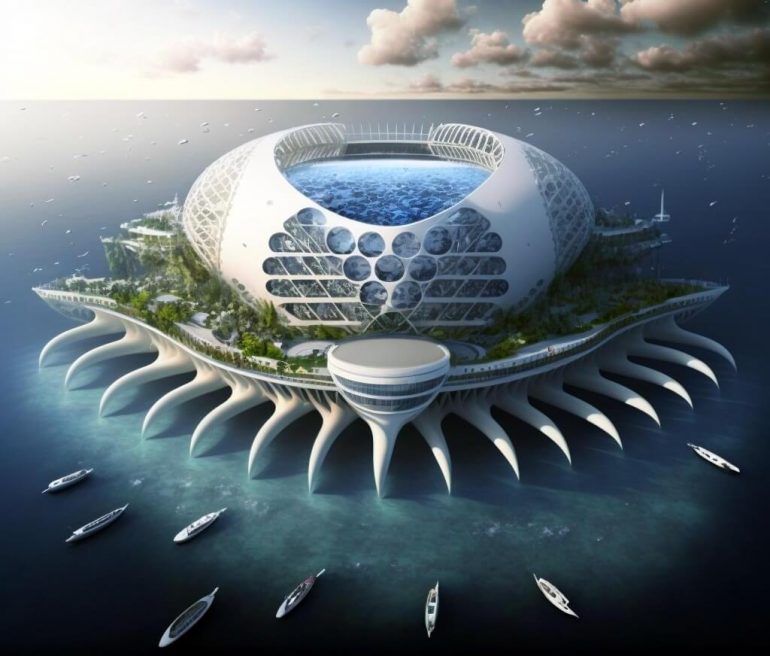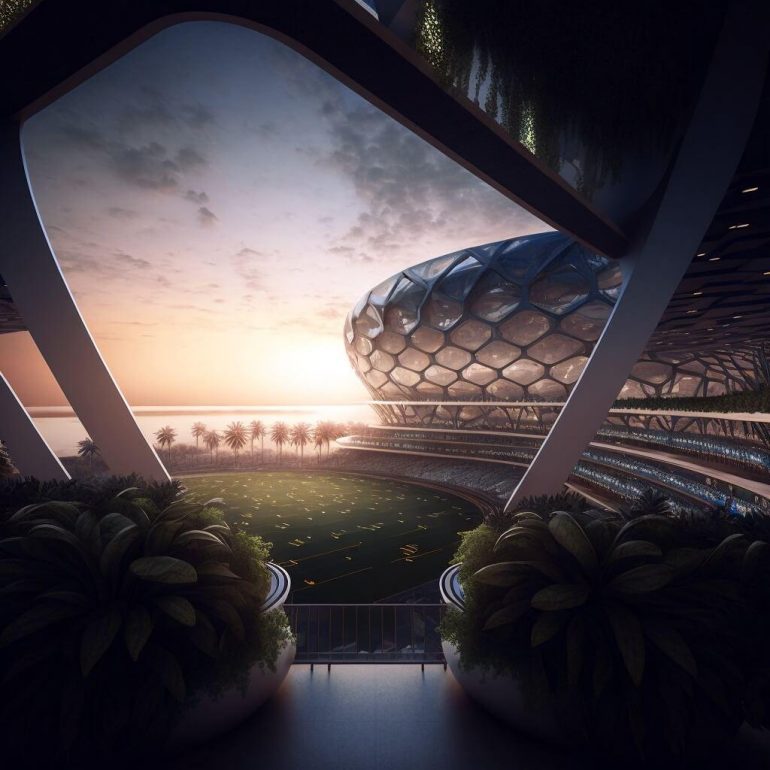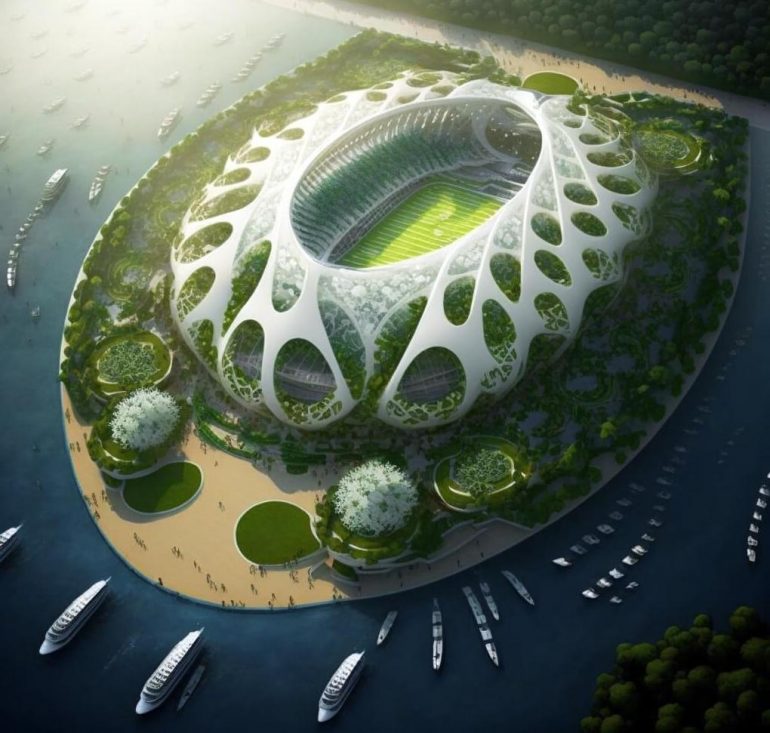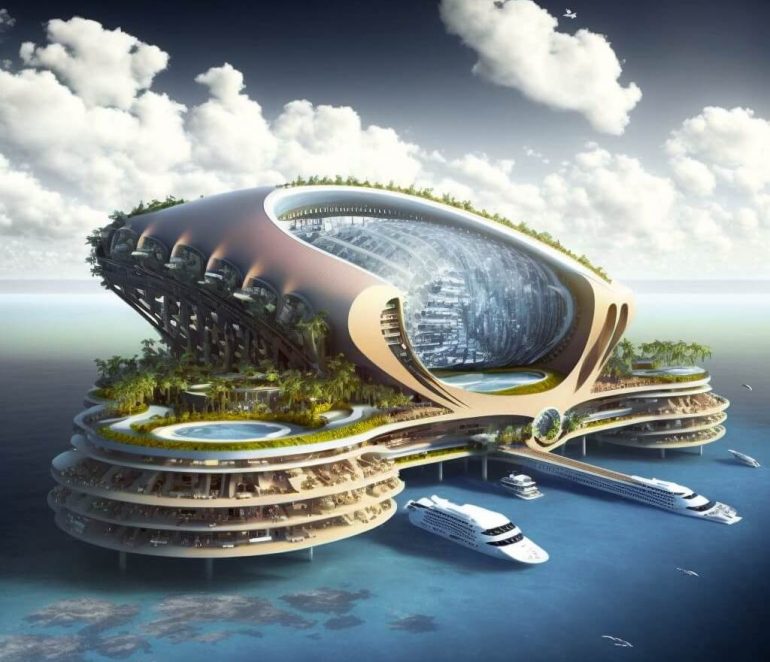It is starting to seem as though the terms stadiums and simple will never again be used in the same sentence. If you thought Pouria Babakhani’s extravagant designs for future stadiums were crazy, look again. Vincent Callebaut Architectures is blowing the stadium out of the, well, stadium. Presenting Oceaniums: futuristic floating stadiums that will upend conventional wisdom, amaze you, and provide sports fans access to a whole new world while revolutionizing global sporting events. With Oceaniums, which were designed with the 2026 FIFA World Cup in mind, fans will remain where they are while the mobile stadiums will move to the fans.

Refer to them as half-ships, half-stadiums, since the creative French architectural group wants to construct the floating stadiums at water rather than on land. Utilizing recycled resources like solid wood, aluminum that has been recycled, green algae, and plastic trash from the seventh continent, the low-carbon community hubs will be built. It will operate on the same tenets, navigating solely on renewable energy sources like solar radiation, wind energy, and ocean currents.

The disruptive design team wants to shake up the sports industry by bringing a fresh perspective to cultural and athletic traditions and saying goodbye to outdated stadiums in favor of innovative, remarkable, sustainable, and environmentally friendly mobile stadiums.

“The organic geometries of these floating stadiums are inspired by biomorphism, their optimized structures by bionics, and their ecosystem life cycle by biomimicry,” the business said in a statement. They resembled calcifying coral reefs, the skeletons of cetaceans filtering saltwater, and bioluminescent animals. These biodiversity hotspots are devoted to the growth of marine life.

They said, “Only biosourced and recycled materials, such as solid wood, recycled aluminum, green algae, and plastic waste from the seventh continent concentrated in the five oceanic gyres, would be used to build these Oceaniums, true stadiums of the oceans.” This waste plastic would be turned into fresh building materials for 3D printers that are linked to artificial intelligence processors that are controlled by humans. The creation of numerous algorithms, and particularly the predictive learning that AI and 3D printing provide, make it a vital instrument for reducing human dangers on these future enhanced construction sites.

Stadiums are being completely renovated.
AI-powered sports venues can appear like a far-fetched idea at best or like a design project that will never materialize. But nations like Qatar and China have already taken that action. The Gulf nation constructed a stadium out of shipping containers for the 2022 FIFA World Cup, but it was dismantled after the competition.On the other side, the Quzhou stadium in China is billed as the biggest earth-sheltered facility in the world.

If the stadiums are built, they will still fall well short of Vincent Callebaut Architectures’ original design. When they accomplish their well-planned goal, there is no keeping the ball from ending up in their court.